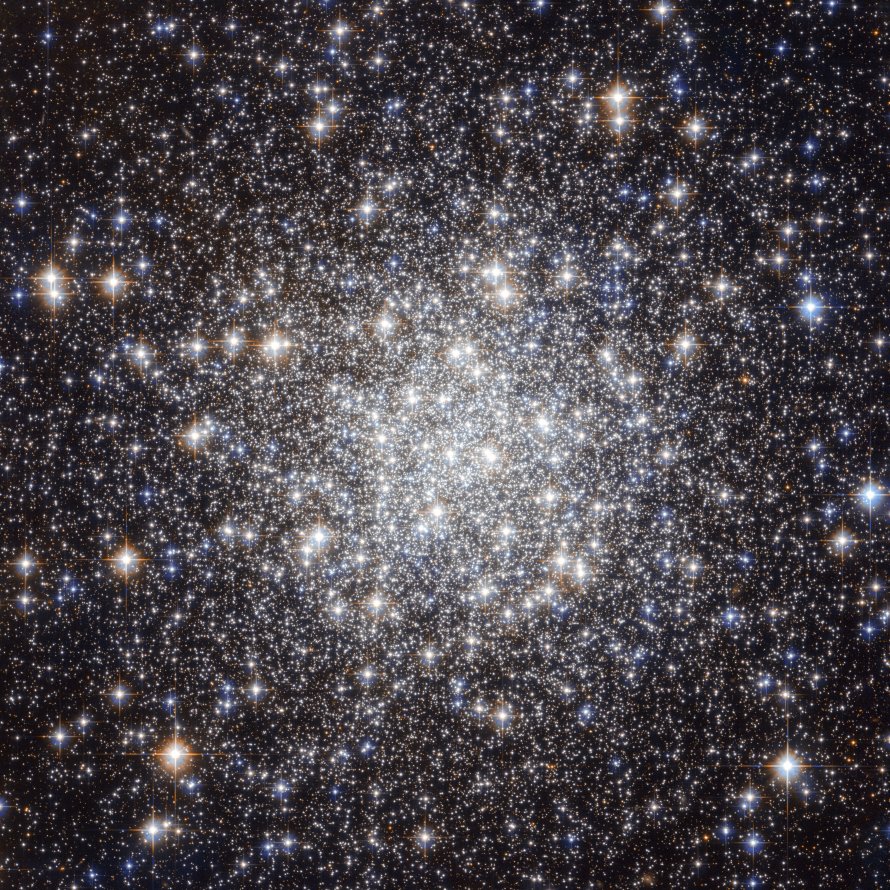M56 (NGC 6779)
Messier 56 (NGC 6779) is a globular cluster located in the constellation Lyra, in the Galactic Center of the Milky Way Galaxy in the Local Group of galaxies. M56 is 33000 light years away from Earth.
M56 is best viewed during early spring, is magnitude 8.3, and can be viewed with binoculars. M56 is 9' in apparent size. For reference, the full moon is 30'.
Observing difficulty: Intermediate
- Name:
- Type:
- globular cluster
- Constellation:
- Lyra
- NGC or IC:
- NGC 6779
- Magnitude:
- 8.3
- Viewing:
- binoculars
- Size:
- 9'
- Distance (light years):
- 33000 LY
- RA:
- 19h 16.6m
- Dec:
- 30 11'
- Season:
- early spring
- Milky Way location:
- Galactic Center
- Galaxy group:
- Local Group
- Messier Marathon #:
- 72
* The naked eye can see up to magnitude ~7-8 objects under ideal dark sky conditions.
A Cosmic Enigma in Lyra
Messier 56 (M56), a captivating globular cluster nestled within the constellation Lyra, is a celestial object of significant scientific interest. This article delves into the historical context, observational properties, and scientific characteristics of M56, an object that paints a vivid picture of our galaxy's formative years.
Historical Context
Located between the constellations Lyra and Cygnus, Messier 56 was first identified by Charles Messier, the famed French astronomer, on January 23, 1779. Messier noted the object while searching for comets and added it to his catalog to avoid confusion in future astronomical studies. Today, the Messier catalogue is well-regarded by both professional and amateur astronomers for its list of visually striking non-cometary objects.
Physical Properties
Messier 56 is approximately 32,900 light-years away from Earth, making it one of the more distant globular clusters in the Messier catalogue. The cluster has a relatively low concentration of stars, which leads to its classification as a class X globular cluster on the Shapley-Sawyer Concentration Class scale. This scale runs from I (most densely packed) to XII (least densely packed).
Magnitude and Size
With an apparent magnitude of 8.3, Messier 56 is a relatively faint object that cannot be observed with the naked eye. Its low brightness, coupled with its small angular size of roughly 7 arcminutes, means that it can be a challenging object for beginner astronomers to identify. However, under dark skies and with the aid of a medium-sized telescope, Messier 56 reveals itself as a fuzzy, spherical grouping of stars.
Scientific Significance
Scientists estimate that Messier 56 is approximately 13.7 billion years old, making it one of the oldest known globular clusters. This age places its formation within the early stages of the universe, not long after the Big Bang. As such, studying Messier 56 provides insights into the earliest stages of star formation and galaxy construction.
Finding and Viewing Messier 56
Messier 56 is located along the line connecting Albireo (Beta Cygni) and Gamma Lyrae, closer to the latter. For observers in the Northern Hemisphere, the cluster is best seen during the summer months when the Lyra constellation is high in the sky.
Given its faintness, viewing Messier 56 requires a dark sky free from light pollution. With binoculars, it may appear as a faint, diffuse patch of light. Observing the cluster with a small telescope under low magnification reveals a blurry, spherical region of light. Larger telescopes under high magnification may resolve the cluster's outer regions into individual stars, offering a fascinating sight to behold.



